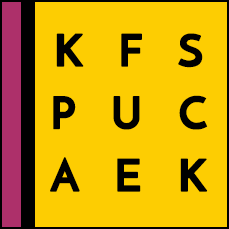QUICK READ
Sensory Memory is the first stage of memory according to Atkinson and Shiffrin’s (1968) Multi-Store Model of Memory.
Storage/Capacity
Sensory Memory has no storage facility, so is in effect a funnel that selects information from the outside world for your Short Term Memory to use. Thousands of pieces of information pass through sensory memory every second, but just 1% of that information ever makes it to conscious thought.
Duration
Your Sensory Memory lasts for just 1-2 seconds. Anything that you’ve not paid attention to in that window is lost and forgotten. Anything attended to is passed on to Short Term Memory/Working Memory.
Attention
The way to use information from your Sensory Memory is to pay attention to it.
DETAILED EXPLANATION
Introduction to Sensory Memory
It is unanimously accepted that we each possess multiple memory stores. Even in everyday conversation people allude to a distinction between short and long term memories – ‘I can remember my first day at school, but can’t remember where I left my car keys’.
When discussing different memory processes and stores, it is logical to start at the beginning. For cognitive psychologists, the process of memory starts when we initially interact with a stimulus.
The element of memory has been referred to as many things over the years – Psychologists sometimes choose to rename something rather than use another researcher’s term, often in the hope that their contribution to the field will be considered more distinct – but most psychologists have settled on the term Sensory Memory to refer to the first process of memory. Other terms you may read about are ‘Sensory Buffer Store’ and ‘Sensory Storage’.
‘Sensory memory gives us an accurate account of the environment as experienced by the sensory system’ (Gross, 1988). Most of the sensory information around us remains unattended to because there is simply too much going on at any given moment for an individual to experience it all and commit it to Long Term Memory. In fact, most sensory information doesn’t even make it to Short Term Memory.
When we receive an input, the information remains with us for one or two seconds in a relatively analysed form. Beyond this minimal time-frame, any information not actively attended to will be forgotten. If you are brushing your teeth, it is irrelevant to you what colour the car that just drove past on the street is; therefore, unless you actively attended to the car, it will not be transferred to Short Term Memory, even though you experienced the stimulus in Sensory Memory.
Experimental Evidence of a Sensory Memory Store

Sperling (1960, 1963) demonstrated that more information is available immediately after visual stimulation than is available for recall even a few seconds later.
Method: Participants were shown a 3×3 grid containing nine letters for 50 milliseconds (1/20 of a second). Sperling asked the participants to immediately recall as many letters as they could – a method known as whole-report procedure.
Results: On average, participants were able to recall 4.32 letters, though they insisted that they had seen more letters appear on the screen, but the memory of the letters faded too fast for participants to identify them all.
Further Research: To test whether the limitations recorded above were due to the capacity of Visual Sensory Memory (which Sperling calls Iconic Memory – remember what I said about researchers liking to come up with their own terms?!), Sperling conducted some variations on his original study.
In one variation, he informed participants of which row he would like them to recall before he showed them the grid for 50ms (partial-report procedure) – in this variation participants were able to accurately recall the letters with ease.
Having determined that participants were able to direct their attention to one or other of the lines in the grid, Sperling inverted the experimental design and, using a tone (high pitch, medium pitch or low pitch) he informed the participants which row he would like them to recall immediately after showing them the grid for 50ms. Even when informed after seeing the grid, participants were successfully able to recall the 3 letters in any row as directed.
This result demonstrates that participants in fact held an image of all 9 letters in their Iconic Memory.
Sperling found that as the delay between stimulus and recall became longer than 1 second, participants’ ability to recall of one row of letters dropped to 50 percent.
Discussion: Sperling’s research demonstrates that whilst we are able to experience a large amount of information at any given moment, there is a very short buffer period before unattended information is removed from our Sensory Memory Store.
There are certainly questions of ecological validity that can be raised when considering Sperling’s results, as his laboratory experiment does not represent a normal scenario.
However, regardless of the general limitations of laboratory studies, Sperling’s work suggests that we are aware of stimuli even if we see them for a mere fraction of a second, but a delay as short as one second may destroy our ability to recall the information unless the stimulus is immediately attended to.
